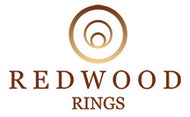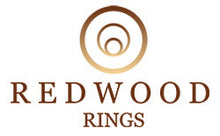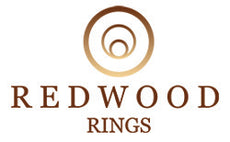Are Tungsten Rings Hypoallergenic?

Did you know that approximately 17% of women and 3% of men are allergic to nickel , a common metal found in jewelry? This surprising statistic highlights a widespread yet often overlooked issue – metal allergies in the world of adornments. It's not just about the discomfort; it's about the limitations these allergies impose on people's choices in jewelry.
In a world where metal allergies pose a real challenge for many, the quest for hypoallergenic jewelry is more than just a trend—it's a necessity. This brings us to the heart of our discussion: are tungsten rings hypoallergenic? These rings have emerged as a stylish yet practical solution for those seeking beauty without the risk of allergic reactions. But the question lingers – are tungsten rings hypoallergenic?
Understanding Hypoallergenic Materials
'Hypoallergenic,' a compound of 'hypo-' meaning less, and 'allergenic,' referring to causing allergies, is a label used for materials less likely to provoke an allergic reaction . This doesn't guarantee an absolute allergy-free experience but significantly reduces the risk. In the context of metals, a hypoallergenic status is usually achieved by avoiding common allergens like nickel, cobalt, and lead, notorious for skin sensitivities. The importance of such materials in jewelry cannot be overstated.
Jewelry, by its very nature, is in constant contact with the skin. This prolonged exposure raises the risk of allergic reactions, especially in individuals with sensitive skin. Thus, hypoallergenic jewelry becomes more than a mere choice—it's a thoughtful consideration for well-being and comfort. It allows individuals with skin sensitivities to enjoy adornments without fear of irritation or discomfort. In this way, hypoallergenic jewelry transcends mere aesthetics, symbolizing an inclusive approach to beauty where elegance and health coexist harmoniously.

Tungsten Metal
Tungsten, a heavy stone metal known for its robustness and high melting point, is often celebrated for a less-discussed yet significant attribute - its hypoallergenic nature . Tungsten's hypoallergenic qualities stem from its innate properties. Unlike many traditional jewelry metals, tungsten does not contain high levels of nickel or other common allergens, often the culprits behind skin irritations and allergic reactions.
This characteristic of tungsten makes it an increasingly popular choice for those with sensitive skin or metal allergies. Tungsten's compatibility with sensitive skin is so notable that it has become a go-to material for wedding bands and other jewelry worn daily. The rarity of allergic reactions to tungsten is backed by anecdotal evidence and scientific understanding of its composition.
Moreover, the hypoallergenic nature of tungsten does not come at the expense of its appearance or durability. Tungsten rings, for instance, are known for their sleek, modern look and ability to retain polish and resist scratches. This combination of hypoallergenic properties and aesthetic appeal positions tungsten as a highly desirable material in the jewelry industry, especially for those seeking long-lasting, skin-friendly options.
Allergies
Allergies are a common yet complex phenomenon where the body's immune system reacts abnormally to certain substances, known as allergens. These reactions occur when the immune system mistakenly identifies a typically harmless substance as a threat and mounts a defense against it. This immune response can manifest in various forms, ranging from mild to severe and, sometimes, even life-threatening.
Regarding skin allergies, the reactions are localized to the skin and are commonly triggered by contact with allergens. These reactions are known as contact dermatitis and can be divided into two main categories: irritant and allergic contact dermatitis.
Irritant and Allergic Contact Dermatitis
Irritant and allergic contact dermatitis are two types of skin inflammation caused by substances that irritate the skin. Irritant contact dermatitis, the more common type, occurs when a chemical or physical agent damages the skin. Allergic contact dermatitis, on the other hand, is an immune response to an allergen.
Symptoms for both include redness, itching, and sometimes blisters. While they share similar symptoms, they differ in cause and sensitivity. Irritant contact dermatitis can affect anyone given sufficient exposure, while allergic contact dermatitis requires sensitization to an allergen and can occur even with minimal exposure.
Did you know?
Allergic contact dermatitis affects about 1 in 5 individuals.
Metals That Cause Allergic Reactions
The most common metals that cause allergic reactions are nickel, cobalt, and chromium. These metals are often found in alloys, such as stainless steel, brass, or gold, and can be released from the surface of the metal when exposed to sweat, moisture, or friction. Other metals that can cause allergic reactions include gold, silver, platinum, copper, zinc, mercury, and titanium. However, these metals are less likely to trigger contact dermatitis as they are usually more pure and less reactive.

Nickel
The most common cause of metal allergy and often triggers skin reactions. Found in many everyday items, including jewelry, coins, and even mobile phones, nickel can cause allergic contact dermatitis. The reaction usually occurs in areas of direct contact with the metal, resulting in itchiness, redness, and blistering. Nickel allergies are particularly relevant for jewelry, as many metal alloys used in jewelry making contain nickel to enhance durability and reduce costs.
Did you know?
It's estimated that over 18% of North Americans , including 11 million kids in the U.S., have a nickel allergy.
Cobalt
Often found alongside nickel, cobalt is another metal that can cause allergic reactions. It's typically used in alloys to add strength and durability. People with a cobalt allergy may experience symptoms similar to those caused by nickel, including skin rashes and itching. It's also worth noting that individuals allergic to nickel are also often sensitive to cobalt due to cross-reactivity between these metals.
Chromium
Commonly used in producing stainless steel, leather tanning, and dyes, chromium can cause allergic skin reactions. While less common than nickel and cobalt allergies, chromium sensitivity can lead to dermatitis, especially in occupations involving frequent exposure to chromium compounds.
Gold
Surprisingly, even precious metals like gold can cause allergic reactions, although it's less common. Gold allergies are usually associated with gold jewelry of lower purity, such as 14k or 10k, where the gold is mixed with other metals, including nickel and copper.
Copper
Known for its reddish hue, it is a metal that can cause contact dermatitis. It's often used in various alloys and can be found in many decorative items. People with copper sensitivity might experience green discoloration of the skin along with itching and rashes.
Are Tungsten Rings Hypoallergenic?
The exploration of tungsten rings as a hypoallergenic option in jewelry reveals a compelling choice for those affected by metal allergies. Tungsten's inherent properties, free from common allergens like nickel and cobalt, offer a safe haven for sensitive skin. The significance of hypoallergenic jewelry, especially in an era where skin sensitivities are increasingly prevalent, cannot be overstated.
Tungsten stands out not just for its durability and aesthetic appeal but also for its ability to cater to the health and comfort of the wearer. This makes tungsten rings not only a fashion statement but also a testament to the evolving landscape of jewelry, where the importance of skin-friendly materials is recognized and valued. By offering a stylish, durable, and, most importantly, skin-friendly option, tungsten rings represent a thoughtful and inclusive approach to jewelry, ensuring that beauty and elegance are accessible to all, regardless of skin sensitivities.






